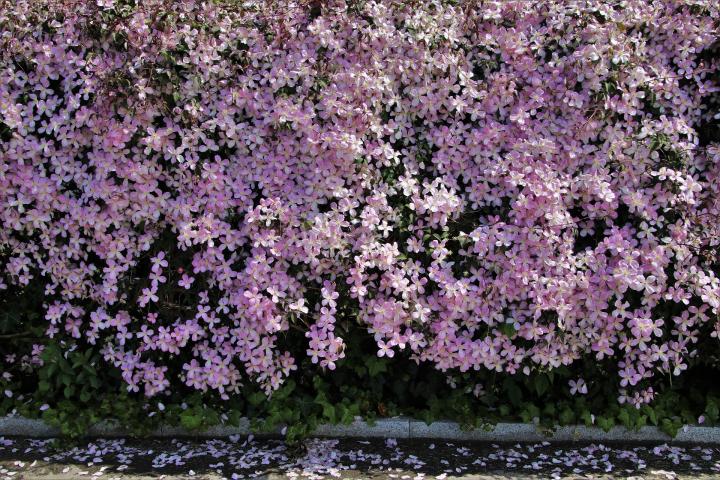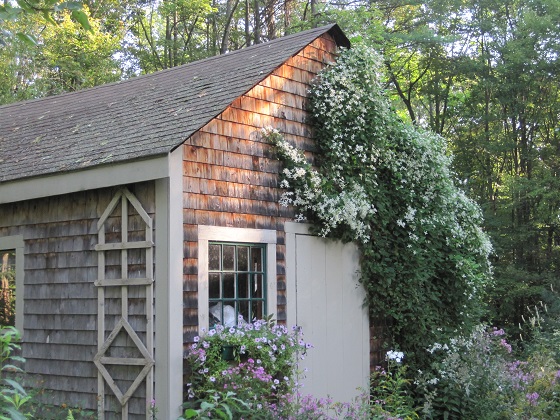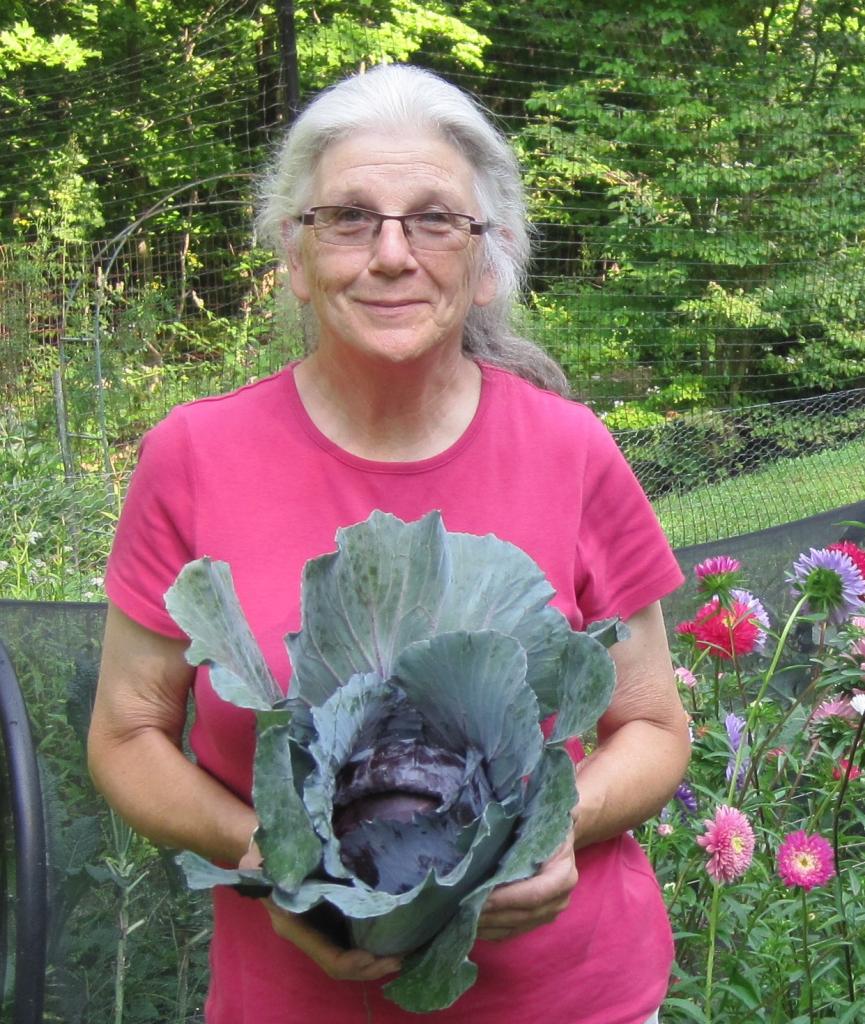When and how to prune your clematis is one of those garden chores that may seem mystifying but is really quite simple. Just like hydrangeas, some clematis blossom on the previous year’s growth—old wood—while others bloom on the current year’s growth—new wood. Find out the best time to prune your clematis variety for continued blossoms!
Clematis Groups Explained
There are many varieties of clematis from small bushes to climbing vines. Most clematis fall into one of three basic pruning groups, sometimes called codes, based on when they bloom. Follow the Code!
Group 1 or Code 1 contains the clematis that blossom early in the season on last year’s growth. They are the vigorous growers such as Alpinas, Montanas, and Macropetalas. If your goal is to cover a fence, wall, pergola, or other large structure, you don’t have to prune these plants at all. Just let them go nuts! If you find that their growth is a little too rampant you can keep them in bounds by pruning right AFTER they flower. The new growth they put on this year will produce next year’s flowers.

Clematis Montana easily covers an unsightly wall.
Group 2 or Code 2 are the early to mid-season hybrid bloomers with large flowers such as ‘Jackmanii Alba’, ‘Fair Rosamunde’, ‘Moonlight’, or ‘Ernest Markham’ that blossom on the previous year’s growth. They don’t need pruning either. If you want to keep the plant looking its best, just remove the dead bits by cutting them back to the next pair of live buds.

Clematis ‘Ville de Lyon’ looks lovely rambling through a rose bush.
Group 3 or Code 3 are the late bloomers, including both species plants and hybrids such as Sweet Autumn Clematis, ‘Betty Corning’, Jackmanii, Texensis, and the Viticellas like ‘Etoile Violet’, ‘Ville de Lyon’, and ‘Polish Spirit’, and other Polish hybrids. You don’t have to prune these at all either but over time the base of the plant will become woody and bare and the flowers will be borne way overhead out of reach. This is fine if you plan to thread it through a tree or grow it on another tall support. To keep it green and encourage new growth however, grit your teeth in early spring and cut it way back. Clip it just above a pair of strong buds, leaving at least a foot of the old stem. It will blossom on the current year’s growth (the new wood), so don’t be afraid of cutting it back hard.

My ‘Betty Corning’ dies back to the ground each year and comes bouncing back to make 8 feet of new growth covered with blossoms each summer.

I have cut my Sweet Autumn back to the first pair of live buds up from the ground and it still makes enough growth to cover the side of my shed with blossoms by late summer.
If you wish, after these vigorous growers have finished blossoming for the season, you can cut them back to keep the plant from being damaged by winter winds and heavy snow.
Getting to Know You
Don’t be in a rush to prune your clematis. Give a new plant a few years to get established and get to know how it grows and when it blossoms.
Dead or Alive?
Sometimes in early spring it is hard to tell whether the vine is dead or just sleeping. Break or scratch a piece of stem to see if it is green inside. Often a stem that looks dead early on will spring to life later.
See our Growing Guide for Clematis for information on planting and caring for this perennial flowering vine.














Comments